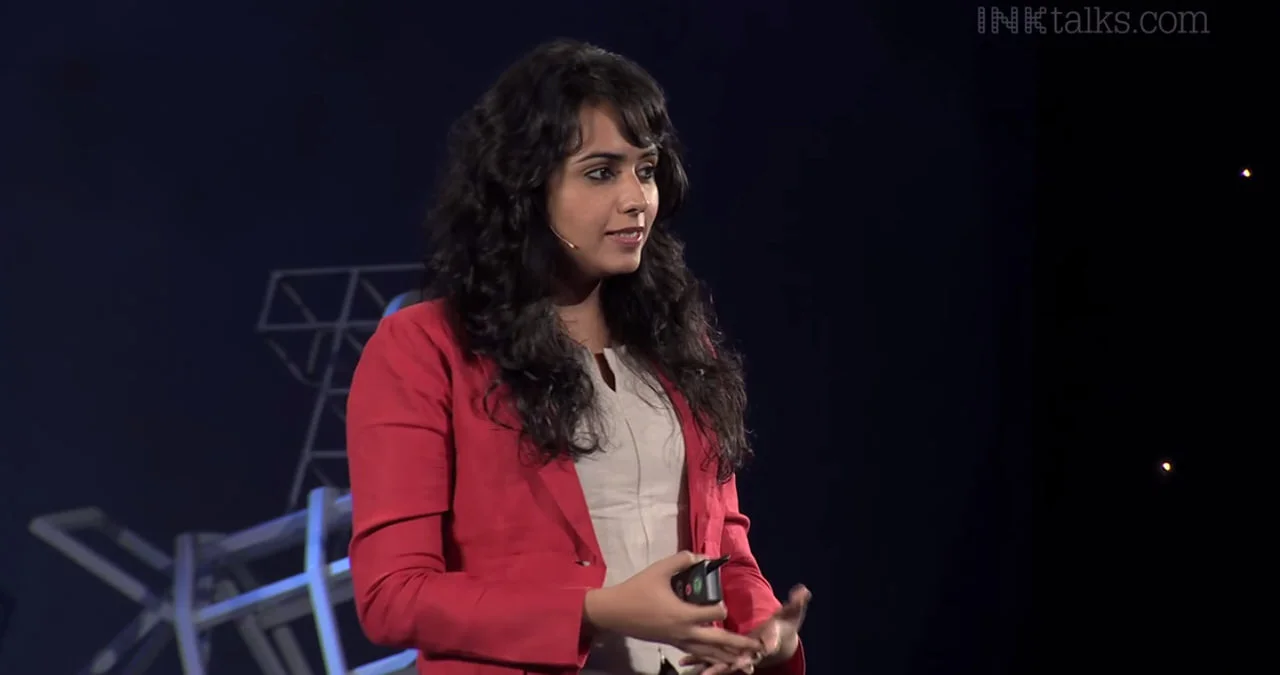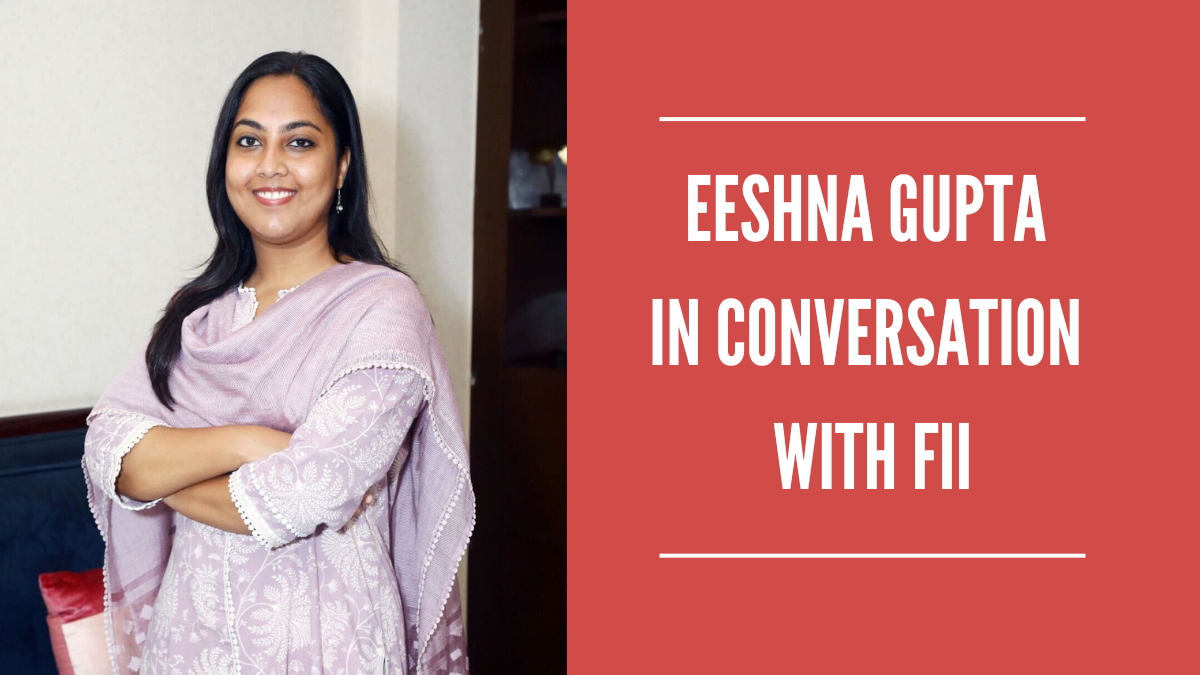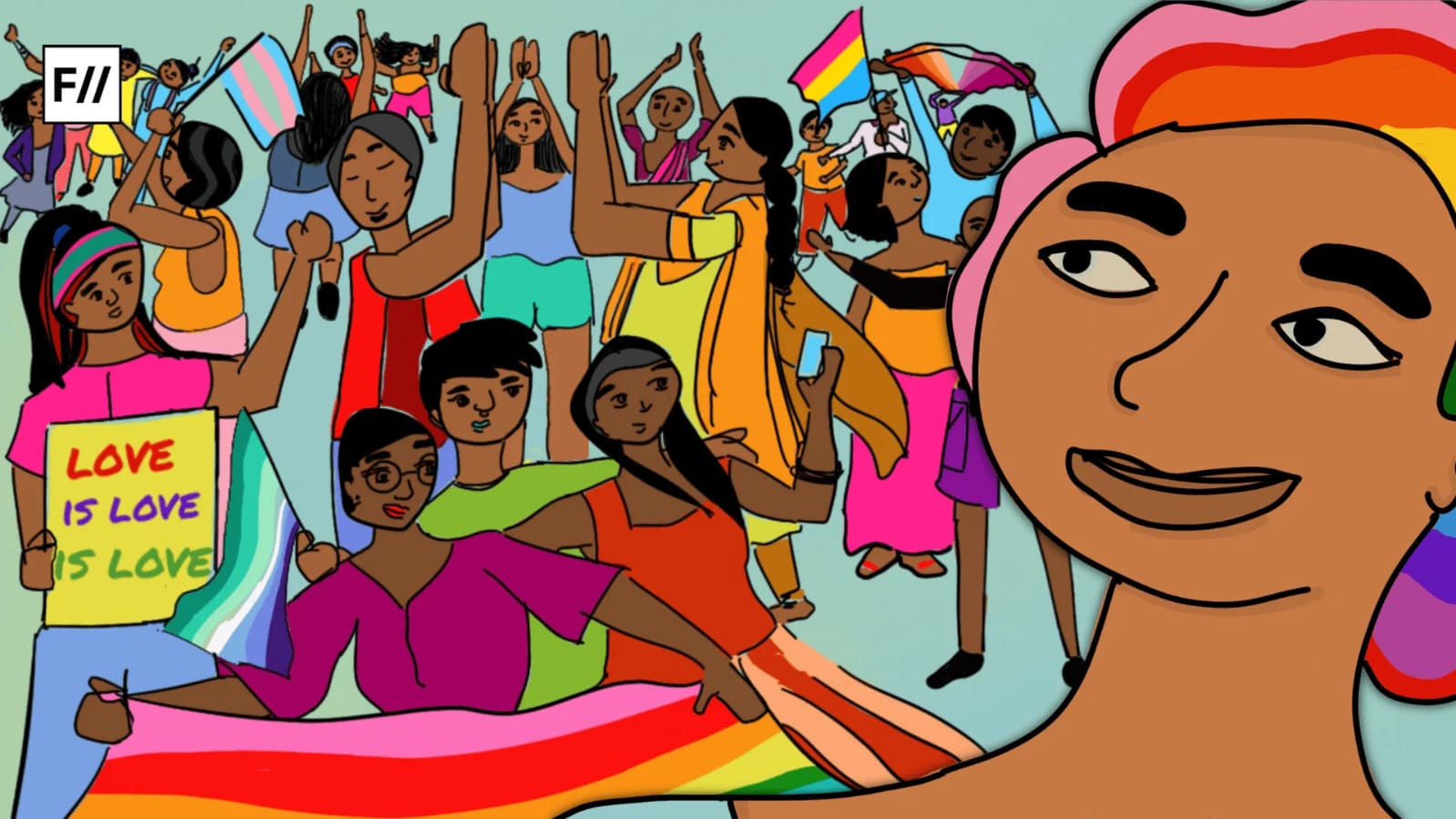Gazal Dhaliwal started off as a software engineer at Infosys right after college but in two years she moved to Mumbai to pursue her dream of writing for Bollywood. Changing her career isn’t the only life changing decision she’s made in the past decade. Gazal, known as Gunraj till the age of 25 to everyone around her, was born with gender dysphoria. In one of her INK talks (yes, she’s done more than one) Gazal says “For as long as I can remember, I’ve always felt, without even a fragment of doubt, that I was a girl.”
The discrepancy in how the world perceived her and how she perceived herself made living in her body a prison she had no way out of. In 2007, she underwent Sex Reassignment Surgery (SRS) and described the feeling not as being overjoyed or enthusiastic but as finally feeling at ‘peace’, because what was always meant to happen had happened. Ever since then, Gazal has been very vocal about her journey and her transition.
Apart from the many write ups, interviews and talks she’s given on the subject, some of you may also recognise her from an episode of Satyameva Jayate titled ‘Accepting Alternate Sexualities’ where we got to hear her beautiful singing voice. In this interview with Aamir Khan, Gazal along with her parents discuss the story of her transition on national television. It isn’t difficult to imagine the scale of her reach and the impact that her story must have had on thousands of people who’ve had the fortune of encountering it; to people suffering like she once did, hope and to the people around them, a reminder to be sensitive.
Recently, Gazal was part of an eight member team that attended the International Visitor Leadership Program (IVLP) on Transgender rights in the USA. This was the very first Indian team of its kind to be part a three week exchange program organised by the US Department of State.
In this interview with FII, Gazal talks about her work, her hopes for the LGBTQIA+ movement and her experience at the recent exchange program.
Sheryl Sebastian: You’ve been a part of the LBGTQIA+ movement for several years now, how far do you think we have come in recent years and how far do we need to go? Do you think we’re currently on the right track?
Gazal Dhaliwal: We live in such paradoxical times, it amazes me. In 2013, the Supreme Court of India overturned a great judgment of the Delhi High Court (which had decriminalized homosexuality) and threw us, as a society, back into the colonial times. But the same Supreme Court, in 2014, also gave a very progressive judgment with regard to the rights of transgender people in NALSA v. Union of India, wherein it upheld the right to a life of dignity for all transgender people.
So, legally, I guess I’d have to say – the struggle for human rights is moving in the right direction in some areas, while in others, the road is proving more challenging.
When it comes to Bollywood, sadly, the picture is not optimistic at all. 20 years back, when Deepa Mehta’s ‘Fire’ had come out, cinema halls were stoned and burned. Today, when Hansal Mehta’s ‘Aligarh’ comes out, the Censor Board (which actually has no right to ‘censor’, but only to ‘certify’ a film) tries to stifle its voice by chopping off important shots and scenes. Queer and transgender characters still remain a source of humour in our popular TV shows as well as films.
However, many news outlets (TV as well as print), thankfully, stand in solid support of LGBTQIA+ rights. Thanks to them, there is now, at least, a conversation about gay, lesbian, bisexual, transgender Indians. More and more people in the society are being made aware that this is not a miniscule minority (as proclaimed by the Supreme Court judgment) and that our struggles are real.
So yeah, I wouldn’t say that the picture is bleak, but I also wouldn’t say – Spring is here! We have a long way to go, but the only way ahead is forward.
SS: What is your advice to someone who hasn’t come out or is struggling to?
GD: My advice would be to, first of all, be practical. Your life and safety is of foremost importance. If you feel you’re not in a safe environment to come out, then take your time. Seek emotional support from online groups (anonymously, if need be), work hard and create a space for yourself where you can be independent (financially and socially) and thus, free to live life on your own terms.
Coming out can be very emotionally taxing. You must prepare yourself for the worst possible outcome. So, I would suggest you form a close network of friends from the community who can be your support system, if you find yourself abandoned by family and friends.
At the same time, you must also be sensitive to the emotional turmoil your family and friends would go through when you come out. Allow them to express their anguish (as long as they don’t physically harm you), show them the generosity and love that you expect from them. Your coming out is hard on them too. Hear them out with a warm heart. This would also ensure them that you’re not a ‘freak’ who is revolting against societal norms by being L, G, B or T, but that you’re a wise, loving, sensitive person who knows what he/she/they are doing.
Lastly, always remember that you’re not alone. There is a large community of people out there who understands you deeply. You simply have to reach out.
SS: In one of your INK talks, you said “It’s probably easy to appreciate and ‘accept’ me because I don’t question anybody else’s idea of what’s normal. But what about those who do, for no fault of theirs?” What are the ways in which people outside the LGBT community can be inclusive of people part of it who don’t fit into their idea of ‘normal’?
GD: Oh, I can give you a long list of things they can do. Or I can simply say this – Just treat LGBTQIA+ humans as, simply, humans!
The word ‘normal’ has never sat well with me. No kind of sexuality or gender identity is abnormal. All you can say is that some people’s ways of being are more common, while others are less common, but they’re all NORMAL!
If someone is gay, that is not their whole and entire existence. They’re a complete person with many quirks and dreams and abilities, just like anybody else. The same goes for a transgender person. Now, a transgender person may stand out from others, appearance-wise, but why would you judge the entire personality of a human being simply by their looks? Research has shown that the more you interact and get to know someone who seems different from you (or most), the more you realize that they’re more similar to you than different. Try it sometime. Just as an experiment, sit and have a chat with the next hijra person you see. Let yourself be surprised.
SS: How much of your life and experiences influence the themes you explore in your work as a screenwriter?
GD: I haven’t yet consciously explored LGBTQIA+ themes in my mainstream writing because there has been little opportunity to (remember, the mainstream Hindi film industry is not an easy one to crack for a complete outsider). But I guess who I am as a person must show in my writing. I fervently believe in equal rights for men and women. My female characters would never be cardboard characters, even if they have a small role. I would never allow for a co-writer to let homophobic/transphobic humour come into our work.
That said, I do have ideas and stories I want to develop once I reach a slightly more solid ground in the industry. Hopefully, soon.
SS: Most recently, you wrote the dialogues for the upcoming film ‘Lipstick Under My Burkha’. Just the trailer has created quite the buzz, for what seems like an honest potrayal of female sexuality and desires so rarely seen in Bollywood cinema. How did you decide to work on the film? What was the most exciting part about working on it?
GD: When Alankrita Shrivastava, Screenplay-writer and Director of Lipstick Under My Burkha, gave me the screenplay to read, I had no idea that it would be such a lip-smackingly delicious read. The four women protagonists were delightfully modern, despite the oppressive patriarchal social structures they were confined within. It was instant love. There was no way I could say ‘no’ to a screenplay like that.
There were many exciting things about the film. The women characters are unlike anything we have seen in Hindi cinema. They’re fun, they’re smart, they’re vulnerable, flawed and yet, they make you cheer for them. Giving them words, especially in Bhopali dialect, was a challenge I enjoyed thoroughly. To add to that, the two women I was writing with – Alankrita and Suhani Kanwar (Additional Screenplay) – made the process great fun too. It was a total joyride. I can’t wait to see people’s reactions when they discover our four lipstick-wearing marvellous women!
SS: You were part of the Indian team that attended the first International Visitor Leadership Program (IVLP) for transgender rights in the USA. Tell us more about it.
GD: I thought this was a great opportunity because the US is far ahead of us in the area of LGBTQIA+ equality. They recently made gay marriage legal across the country. That’s huge when you compare it to our law, which makes criminals out of gays and lesbians. I was intrigued to know and understand where the US stands on transgender rights and how they’ve reached where they have.
They identified and selected individual leaders from across India who could then form common goals and collaborate in working towards them. How else would a film writer in Mumbai have met a hijra activist from Hyderabad and exchanged notes on the work that they need to do together?
SS: This put you in touch with many other people from the Indian transgender community. Can you tell us about the people you got to meet?
GD: It was a great mix of NGOs as well as hijra community representatives along with artists from different regions of India. There was a lot to learn from them. Meera Parida from Orissa is a hijra activist who is on her way to being a leading figure in politics with the unrelenting support of her companion Sadhana Kinner, head of SAKHA organization, while Vyjayanti Mogli and Rachana Mudraboyina work for a collective which is working very hard to get jobs and dignity for hijra sex workers, while creating awareness about a draconian Bill that the Govt of India has tabled in the Lok Sabha (which goes against the rights of transgender people). Rudra Kishore Mandal is an artist who uses art as a medium of advocacy for LGBT rights, while Rupika and Jaya are doing some fantastic work in NGOs like SPACE and Sahodaran in Delhi and Chennai, respectively.
Each of them has unique abilities and perspectives which I got to learn from. Particularly, I got deeper insight into the struggles of the hijra community and how the prejudice against them is so severe that even well-educated hijra people, like Rachana herself, are not able to find respectable jobs. I also learned from Vyjayanti about the problematic Bill, Transgender Persons (Protection of Rights) Bill 2016, that the Govt of India is planning to introduce in the Lok Sabha, which actually violates transgender people in the name of protection. A lot of hijra community members have been protesting against it across the country and the government must listen to these concerns.
SS: How do you think the transgender movement is different in both the countries, and what lessons do you think they can take away from each other?
GD: What we can certainly learn from the American struggles is to create different bodies and organizations which focus on different aspects of the LGBTQIA+ struggle. For instance, they have something like HRC (Human Rights Campaign) which campaigns for selecting LGBTQIA+ -supporting individuals in their legislative bodies (Senate and House of Representatives), while something like PFLAG (Parents, Families and Friends of Lesbians and Gays) works with the parents and families of LGBTQIA+ people. The areas of focus are divided and hence clear, unlike ours, where almost every NGO or civil rights body focuses on everything – from health to advocacy with the govt to parental support. When one body tries to do everything, it often takes a toll on its effectiveness.
Culturally, of course, the big difference is that ‘transgender’ is a new term and identity for most Americans, and so the fight of their rights is relatively in a more nascent stage. Unlike India, where the hijra community has been a very visible and socially acknowledged community of people for centuries and even finds place in our popular mythology like Ramayana and Mahabharata. Hence, the regressive American groups who have lost the ‘Marriage Equality’ battle and have now shifted their focus towards fighting against transgender rights have an easier time there as compared to India, because the transgender population is not collectivised like ours. What they can probably learn from the Indian transgender community is the great strength in unity. The more they stand with one another, the more visible they would be and hence, their voices would be heard loud and clear.
About the author(s)
Sheryl is a science graduate who now wants to become a lawyer. Her interests include feminism in pop culture, cats and Netflix.





Gazal is look